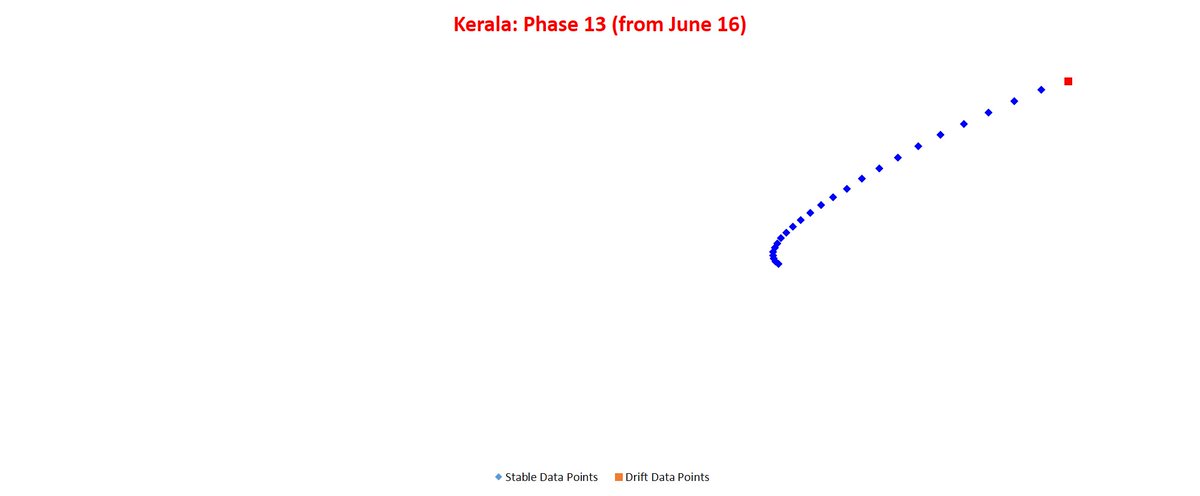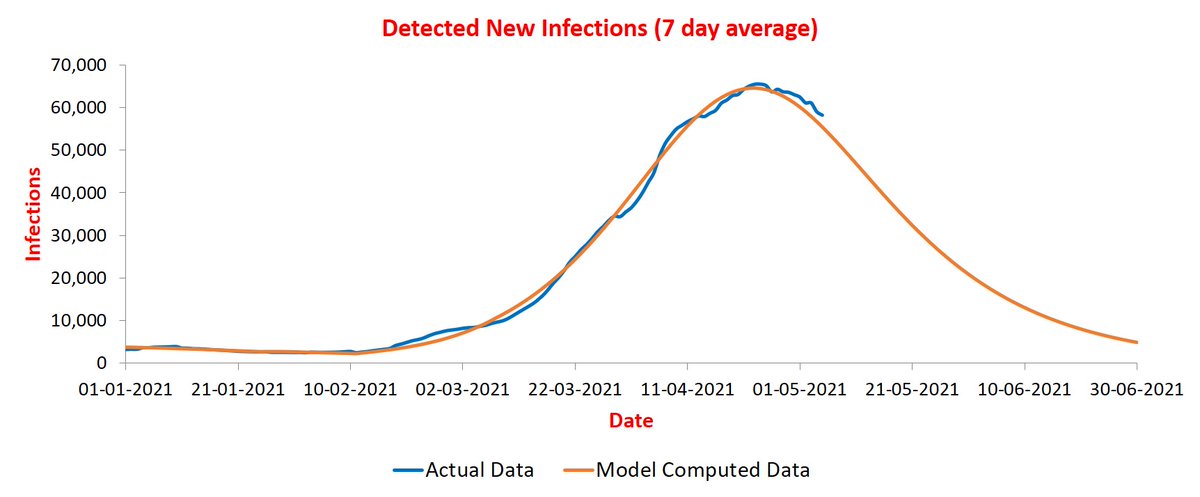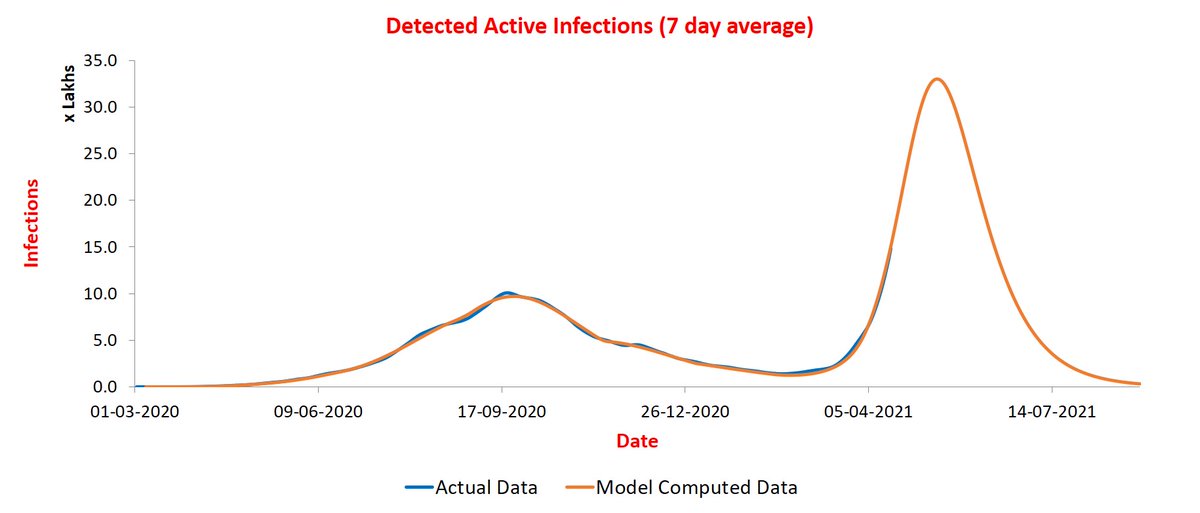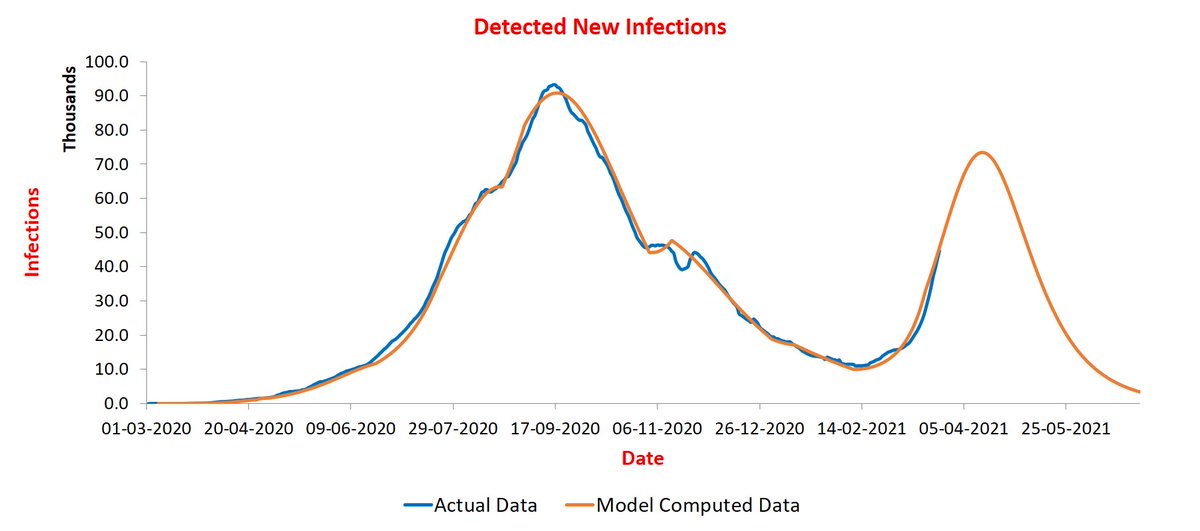
How to get URL link on X (Twitter) App





https://twitter.com/agrawalmanindra/status/1474061526604468225?s=20


https://twitter.com/agrawalmanindra/status/1468496956020252672?s=20. With data up to 16th Dec, SUTRA prediction of trajectory matches well so far.
 There seems to be broad agreement that Omicron arrived in October in SA. If true, our earlier assumption that Omicron arrived in August causing a jump in contact rate is incorrect. So how did Omicron change parameter values?
There seems to be broad agreement that Omicron arrived in October in SA. If true, our earlier assumption that Omicron arrived in August causing a jump in contact rate is incorrect. So how did Omicron change parameter values?

 Note that the initially numbers would be very small and so genome sequencing may not throw up any case, especially if (as has been reported) most of the cases are mild and thus may go unreported. So it is not a surprise that first case was reported in November.
Note that the initially numbers would be very small and so genome sequencing may not throw up any case, especially if (as has been reported) most of the cases are mild and thus may go unreported. So it is not a surprise that first case was reported in November.
https://twitter.com/MenonBioPhysics/status/1451448521538752515?s=20). It makes many important points regarding epidemiological modeling. In this thread, I am going to develop his analysis further and show what is the purpose of SUTRA model. A key point made is that epidemiological models stratify population on age basis since interactions vary widely with age. Further stratification is done between mild and seriously ill cases. Former is useful to make policy decisions about controlling the spread.



 Current phase plot for Kerala shows continuous drifting. The points are turning, which indicates that stability is still far off. What is causing this? Parameter estimates, admittedly imprecise due to drift, show that contact rate is not high, but reach has increased by 25%.
Current phase plot for Kerala shows continuous drifting. The points are turning, which indicates that stability is still far off. What is causing this? Parameter estimates, admittedly imprecise due to drift, show that contact rate is not high, but reach has increased by 25%. 


 UP went through two phase changes in this period. First started on 15th March with 10 days of drift. In this phase, the contact rate went up to 0.53 (95% CI: +- 0.03) from 0.4. And reach roughly doubled. This double whammy caused sharp rise in infections as is evident.
UP went through two phase changes in this period. First started on 15th March with 10 days of drift. In this phase, the contact rate went up to 0.53 (95% CI: +- 0.03) from 0.4. And reach roughly doubled. This double whammy caused sharp rise in infections as is evident.

https://twitter.com/thattai/status/1388487287592296452Policy makers do not make decisions based on one input. They collect them from multiple sources. While we did give our feedback to them last month, and it was received graciously, they were skeptical about our predictions. Seemingly they had better inputs. 😊
https://twitter.com/agrawalmanindra/status/1383825232952057859?s=19




https://twitter.com/agrawalmanindra/status/1369005212875157505We had to wait for a couple of weeks for the new trajectory to stabilize. Here is what we found: the spike observed in many states is primarily due to a significant increase in contact rate (parameter beta). This parameter determines how fast the pandemic is spreading. 2/n

